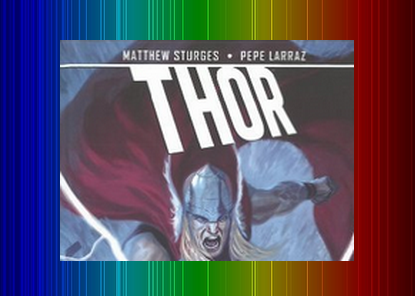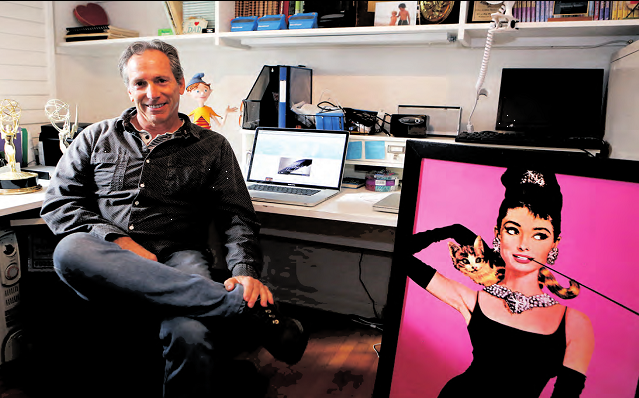As a Marvel Cinematic Universe fan, I’m always searching for Marvel comics that demonstrate strong ties to the MCU while pushing me in another direction as a reader. “Thor: Season One” accomplishes this, and in retrospect, lays the groundwork for further themes and occurrences in the MCU. This is a great refresher for existing fans and a perfect entry point for MCU fans looking to further explore Thor comics. “Thor: Season One” is written by Matthew Sturges and illustrated by Pepe Larraz.
This version offers some differences from the movies, which movie fans will notice right away. In “Thor: Season One,” Sturges retains the shared body/shared spirit mechanic, causing Thor and Dr. Donald Blake to inhabit the same form. They’re both aware of each other, and they both attempt to describe the experience and awareness to Jane Foster at different points in the story.
Other points will remain familiar to MCU fans – Loki’s heritage, the fear that Thor was forever lost/mortal, and more.
Jane Foster
About Dr. Foster: she’s not a nurse (as she was originally in the comics) nor an astrophysicist (like she is in the movies), she’s a kind-hearted doctor who works with Blake. Though in a true partnership, it’s clear that the clinic is Jane’s dream and Blake’s funding enables her to pursue it. Jane puts the most effort into the founding of the clinic.
While old-fashioned in terms of gender roles, we see Jane take on the role of chief nurturer, while Don is financier and emotional support and Thor comes to serve Midgard in a protective role. Jane maintains many qualities that haven’t changed from her first comic appearance to her MCU debut and to her own wielding of Mjolnir. She is:
- Determined
- Committed to finding answers and doing the right thing
- Seldom intimidated by those who are larger or stronger than she is
- Hesitant to accept easy solutions or situations at face value
These character traits have allowed her to endure various incarnations of the story in a very strong way. Jane’s a favorite character of mine, and Sturges allows her to stand on her own as a capable character before any romantic relationship develops (even though Jane and Don begin the story as close friends).
The Fates
I loved “Avengers: Age of Ultron.” What I didn’t love was the serious shortening of the sequence with the Norns, in which Thor (Chris Hemsworth) and Dr. Erik Selvig (Stellan Skarsgaard) traverse to a reflection pool. There, Thor channels the Fates, who reveal to him that someone is collecting Infinity Stones, including the very one that had possessed Jane (Natalie Portman) for a time in “Thor: The Dark World.”
The cave scene was allegedly a point of contention behind the scenes. I was pleased to discover a fuller version of the scene in one of the extras with the digital version of “Age of Ultron.” As someone less familiar with the comics, it explained a lot to me. I’m still grumpy that they cut the scene from the film, and “Thor: Season One” even further reveals the importance of it.
Aside from framing the story and speaking to the reader, the Norns provide a context for the characters’ defiance and their refusal to accept the status quo: whether it be Odin’s law or the way society treats the ill and uninsured on Earth. Their wills, the Fates imply, reshape the story itself. This provides a much greater context for the relationship between MCU Thor and Jane: when he tells her that their fates are entwined (also representative of that of their worlds), he isn’t simply feeding her a romantic line.
With so much Jane hate out there, it’s clear that some readers and viewers are missing the point; the entwining of Fate is something that Thor understands, though the MCU audience may not be entirely invested in.
Costuming
“Thor: Season One” includes some fantastic costume options for the characters. While Thor and Loki’s looks are classic and Jane dresses a little more like “Iron Man 3” Pepper, many of the costuming choices are extremely similar to the MCU choices.
After addressing the Allfather, Jane wears the same blue Asgardian cloak as she does in “Thor: The Dark World.”
Lady Sif is drawn halfway between her classic attire and her MCU armor. Her outfit is for battle (not the male gaze), but she’s still got the classic red and white color scheme.
Odin’s armor is more detailed than often depicted; this looks more like MCU Odin than some illustrated Odins of the past. Larraz and color artist Wil Quintana took the opportunity to add details to the characters’ clothing wherever possible, using illustrated texture and color (respectively) to give fabrics, metal, and other materials a very realistic look.
Fan Culture
I say this with great respect: there’s little difference between really good fanfiction and the best canon stories. Both demonstrate an incredible investment in character progression, and in this way, sometimes the details make all the difference. It’s one reason Joss Whedon is such a great pick to direct “Avengers” movies.
[Tweet “‘There’s little difference between really good #fanfiction and the best canon stories.’ -@irishtara”]
Similarly, Sturges and Larraz get the pop culture appeal of Thor and other characters in the Marvel universe. After his appearance, Thor’s fame rises and he appears on newspaper covers and websites detailed in the comic. They illustrate not only Blake’s difficulty in dealing with such a large shared personality, but the realities of fans themselves, and a look at why we appreciate superheroes. (Even Jane wears a shirt with a Fantastic Four logo on it.)
An illustrated website takes up a two-page spread. The site captures how real-life fans and general audiences would cope with the appearance of Thor in the real world. “Do you think he’s a Christian?” asks one commenter (who probably failed to Google or aims to troll). “They tell me it is a great box filled with kittens. I do not understand the need for it,” Thor is quoted, describing the Internet. And my favorite panel: “Which blond hunk is in talks to play Thor in the new biopic? ‘I’ll have to get in better shape,’ he jokes.”
[Tweet “Thor thinks the Internet is a box filled with kittens, and he’s not wrong.”]
There’s also a vertical panel of ads that show up on the side, including one advertisement for the Thor workout. This is hilarious to any Thor and/or Hemsworth fan, because those are the ads Google serves up every time you perform any sort of search about Thor movies.
Lady Sif
Of course, there’s also the joy of turning the page to see Sif belching loudly as the Warriors Three discuss gender and membership into their ‘club.’
As usual, throughout the story, males try to define her and confine her, but Sif stands on her own. Specifically, she doesn’t buy it when Loki attempts to twist her words.
Recommendation
I definitely recommend “Thor: Season One” to Thor fans, especially those who became more heavily invested in the character due to more recent comic runs or the awesome Thor movies. Like the Bifrost itself, “Thor: Season One” is an ideal bridge between two worlds: fiction to fan culture, comics to movies, and creators to fans.
Author’s note: “Thor: Season One” features lettering by VC’s Cory Petit and cover art by Julian Totino Tedesco. This work was edited by Lauren Sankovitch; assistant editors Jake Thomas with Jon Moisan.


![The Quest Interview Series: The Producers; Rob Eric, Jane Fleming, and Mark Ordesky [Video]](https://geekinitiative.com/wp-content/uploads/2014/09/S1E5sc073.jpg)


